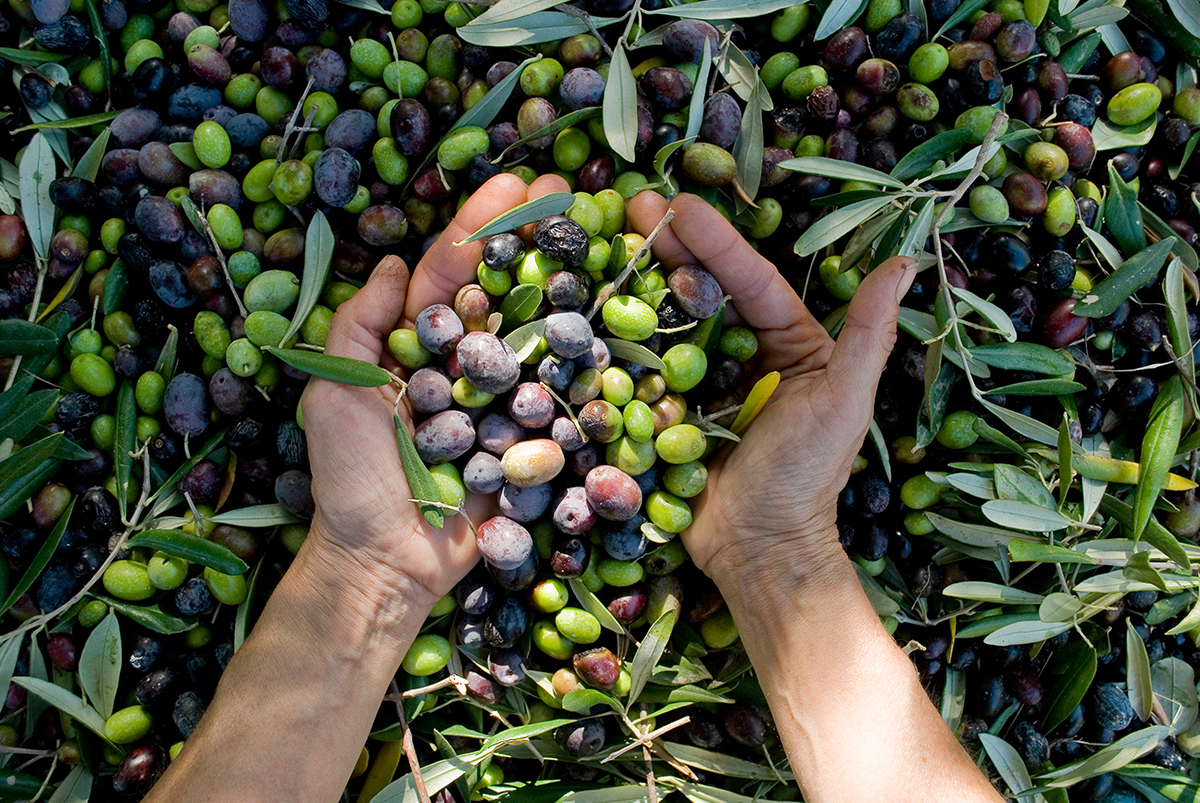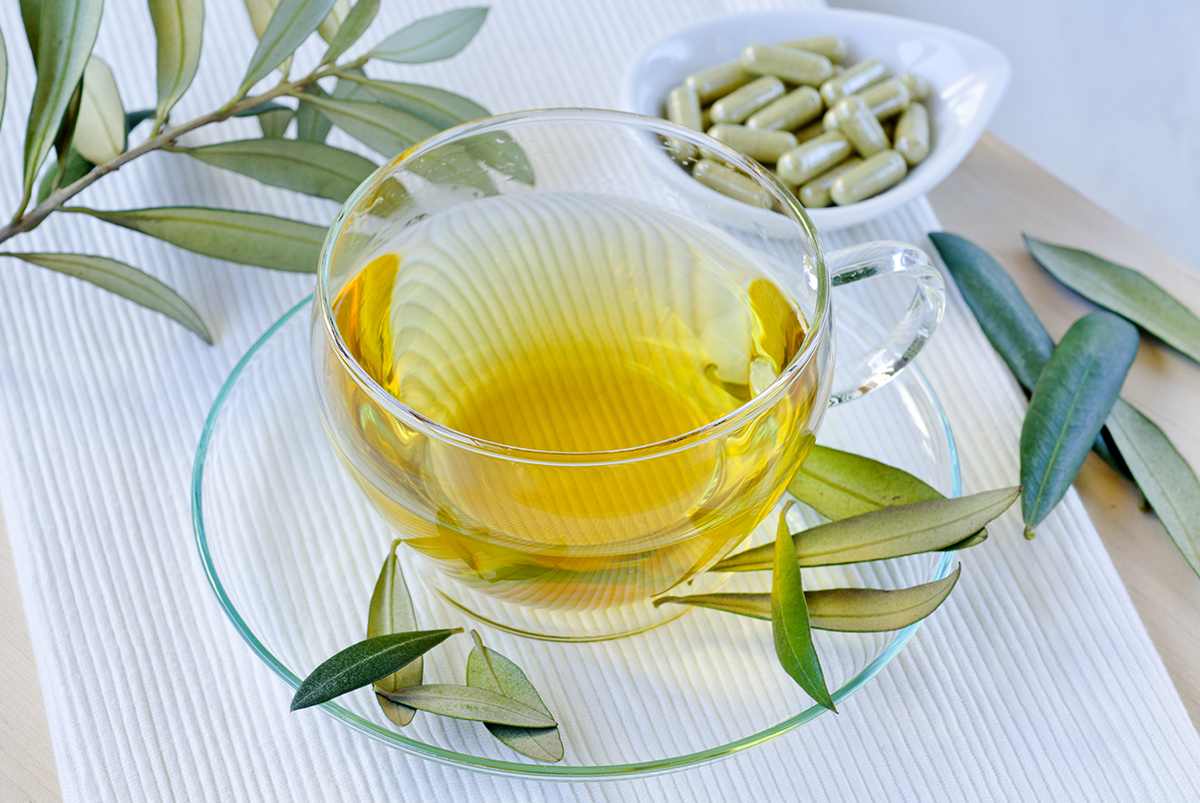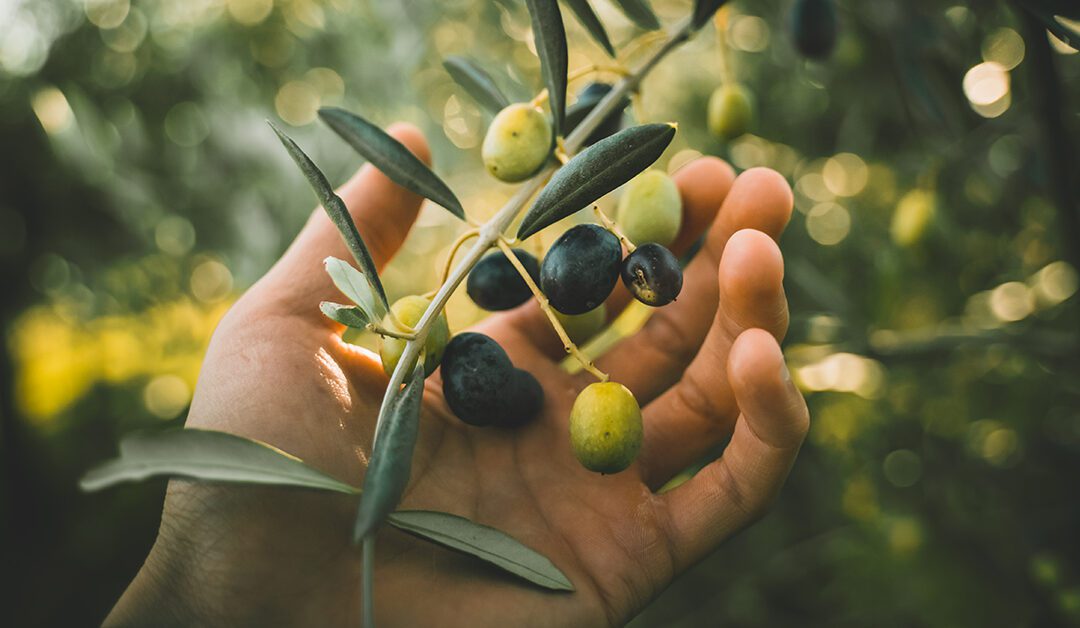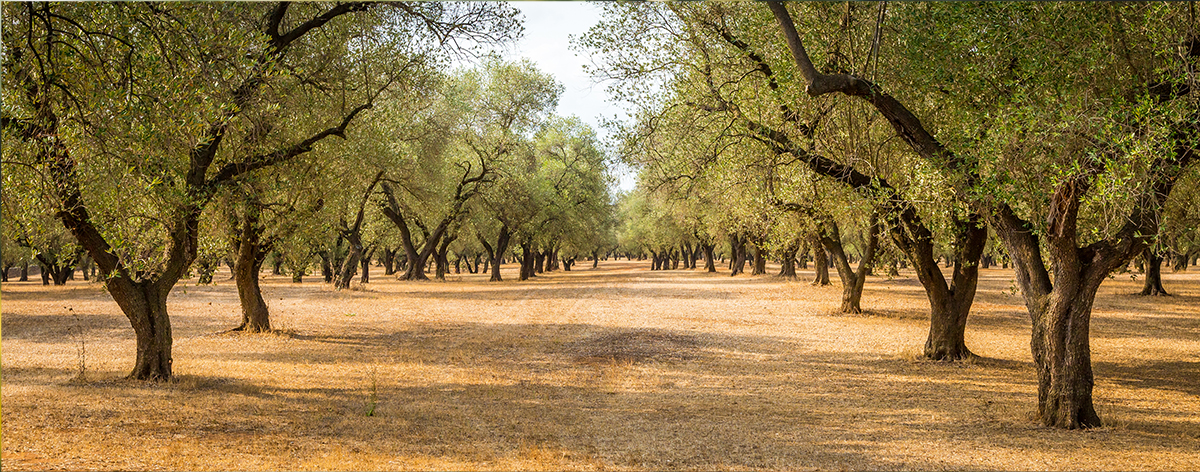Olive is one of the oldest cultivated plants and is native to Italy and the eastern Mediterranean Basin. It is an evergreen with an average height of 6 to 9 meters and can survive in dry climates with high temperatures, temperate, cool dry climates during the winter, and subtropical climates.
There are more than 260 varieties of olive trees and 2000 cultivars in the Mediterranean basin. The branch of the olive is a symbol of socio-ritual culture, peace, and progress that was discovered in the grave of the Egyptian Pharaoh King Tut, and it also has great use in the holy books Quran, Bible, and Babylonian Talmud.
The taste of olives varies depending on the variety; raw olive fruits are bitter and piquant, while fully ripened fruits have a slightly sweet taste. Several countries initiated the project of cultivating olive trees due to their increasing exponential demand in the market and the beneficial effects of their high content of monounsaturated fatty acids such as oleic acid, a potent antioxidant with anti-inflammatory activity.
What is the common name for olive?
Olive is also called by various names in their locality, such as Jaitun, Jalapai, Saidun (Hindi), Jalphai (Assamese), Jalpai (Bengali), Zeitun (Urdu).
Why is olive oil more costly than other edible oils?

At present, the production rate of olive oils is quite low to meet the market value; it has a specific agro-climate, and the slow growth rate of the olive tree makes restrictions on its cultivation throughout the world. Furthermore, the hectic harvest and processing systems present significant challenges to controlling the cost of olive oils. The oil extraction process and age of olive trees when they are harvested also influence the price. The oldest olive tree fruits provide specific characteristics, aromas, and qualities of oils that influence the market value. However, two types of olives are primarily consumed: one for pickling (Mission, Cornicobra, and Ascolano) and the other for oil production (Coratina, Canino, and Aglandeau).
Which state initiated olive plantations in India?
Setting up an olive plantation was challenging because the olive plant is not indigenous to India. Although the Indian Council for Agricultural Research’s (ICAR) initial attempt to cultivate olives in Himachal Pradesh in 1985 was unsuccessful, the Rajasthan government’s strong dedication and willpower resulted in a major victory in the widespread cultivation of seven oil kinds imported from Israel olive plants in Rajasthan, India: Barnea, Arbequina, Cortina, Koroneiki, Picual, Frantoio, and Picholine.

Rajasthan became the first state government to create Rajasthan Olive Farming Ltd. (ROCL) on April 19, 2007, to oversee the entire olive cultivation and olive oil initiative. Rajasthan was the only state in India to start a significant amount of olive oil production in 2013.
What are the medicinal uses of olives?

Olives have multi-therapeutic uses throughout the world and are best known for Mediterranean folk medicine. The different parts of the olive tree, such as the bark, fruits, leaves, wood, seeds, and oil, have traditionally been used for various medicinal purposes, such as seed oil for laxative action and external use as an ointment for inflammation.
Olive plant is the home of remedies for various disease as diarrhea, respiratory, asthma, hypertension, diabetes and urinary tract infections, stomach, control high blood pressure, and intestinal diseases. The bark of an olive tree is good for the removal of intestine tapeworm.
Extra virgin olive oil uses for culinary purposes and refine olive oils also use for hair growth and the healthiness of hair. The olive plant has a potent pharmacological activity for anti-cancer, anti-helminthic, antibacterial, antihypertensive, gastroprotective, anti-inflammatory, antinociceptive, neuroprotective, and cardioprotective properties.
How can olive plant propagation?
Conventional propagation of olive trees is a very poor response such as vegetative propagation of olive plants, and seed germination is also slow. Therefore, in vitro propagation is an optimistic approach to cultivating disease-free mass production of elite species for cultivars or varieties of the olive plant. Seed germination can be treated with diluted acid to rupture the seed coat, which helps in germination.
In vegetative propagation, the stem or branches treated with rooting hormone under greenhouse conditions can be used for multiplication. Advanced biotechnology tools used in plant tissue culture techniques such as somatic embryogenesis, direct organogenesis, and multiple shoot induction could be excellent options for the mass production of this species. Moreover, the molecular technique could be used to enhance the quality and quantity of secondary metabolites in the olive plant.
What are the novel compounds of olives?
The signature food of the Mediterranean diet, olive oil, and table olives are used in food, which contain rich sources of carbohydrates, vitamins (especially vitamins E and K), minerals, and phenolic compounds such as oleuropein, tyrosol, oleocanthal, oleacein, and ligstroside. The flavonoid compounds such as luteolin and pinoresinol were also obtained from olives.
The fleshy mesocarp of olive fruits contains oil, and the fruits also contain a significant quantity of flavonoids, including luteolin, apigenin, quercetin-3-rutinoside (rutin), and anthocyanins. Olive oil contains rich amounts of ω-3 polyunsaturated fatty acids (PUFAs), ω-9 monounsaturated fatty acids (oleic acid).
The amount and composition of monounsaturated fatty acids (MUFAs), PUFAs, and saturated fatty acids (SFAs) depend on the age of the plant, the harvesting time of fruits, the variety of olive plants, agroclimatic conditions, or seasonal variation.
What are the parameters of olive oil tasting?

There are several parameters that can be analyzed to maintain the quality of olive oil, such as Lipid Oxidation Parameters, Volatile Compounds, Sensory Evaluation, pH, Melting Point, Moisture, Peroxide value, Refractive Index, Acid Value, Saponification value, Betanin, Acid value, Baudouin test, Butyro Refractometer Reading, Cloud point, Flash Point, Iodine Value, Insoluble impurity, Lovibond Color, Specific Gravity, Seed Oil, Rancidity, Mineral Oil, Free Fatty Acid (Oleic acid), heavy metal and bacterial contamination
Adulteration and regulation in olive oils
Olive oil’s low productivity and high nutritional value make it highly demanded throughout the global market and ultimately promote the various forms of adulteration in olive oils. The main adulterants of olive oils are soybean oil, sunflower oil, sesame oil, and other seed oils such as corn oil.
The International Olive Oil Council (IOOC) has developed standards for olive oil testing and quality control on the basics of the oil category, such as Virgin Olive Oils, Extra Virgin Olive Oil, and Ordinary Virgin Olive Oil. Other agencies, like those in the European Union countries, accepted the criteria for olive oils’ relevant method of analysis intended by Commission Regulation (EEC) 2568/91.
The FSSAI also provided guidelines for the upkeep of olive oil testing and quality control, such as the requirement that the acidity levels in virgin and extra virgin oils do not exceed 2g/100g and 0.8g/100g, respectively, and that the permissible level for heavy metals like arsenic and lead be no higher than 0.1mg/kg.
Cultivator Phyto Lab is one of the top-tier laboratories that has established and improved a number of procedures for the olive oil testing facility in accordance with local, national, and global regulatory organizations.
Author : Dr. Sanjoy Gupta and Shreshtha Sharma
References:
- https://www.ncbi.nlm.nih.gov/pmc/articles/PMC4352757/pdf/ECAM2015-541591.pdf
- https://link.springer.com/article/10.1007/s11101-017-9526-0
- https://resources.perkinelmer.com/lab
- https://pubmed.ncbi.nlm.nih.gov/28794929
- https://foodsafetyhelpline.com/fssais-new-regulation-on-olive-oil-is-complimented-by-the- industrypeople
- http://www.fnbnews.com/Top-News/Industry-lauds-FSSAIs-new-regulations-related-to-quality-of-olive-oil


